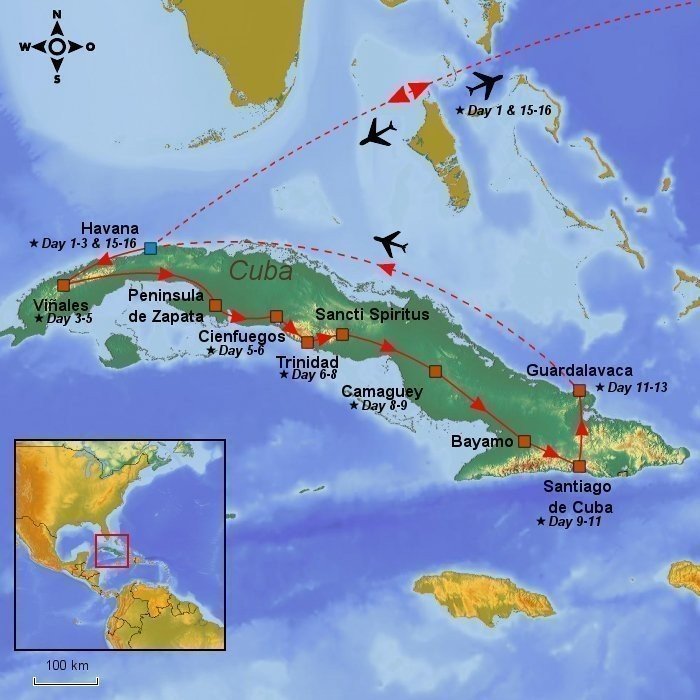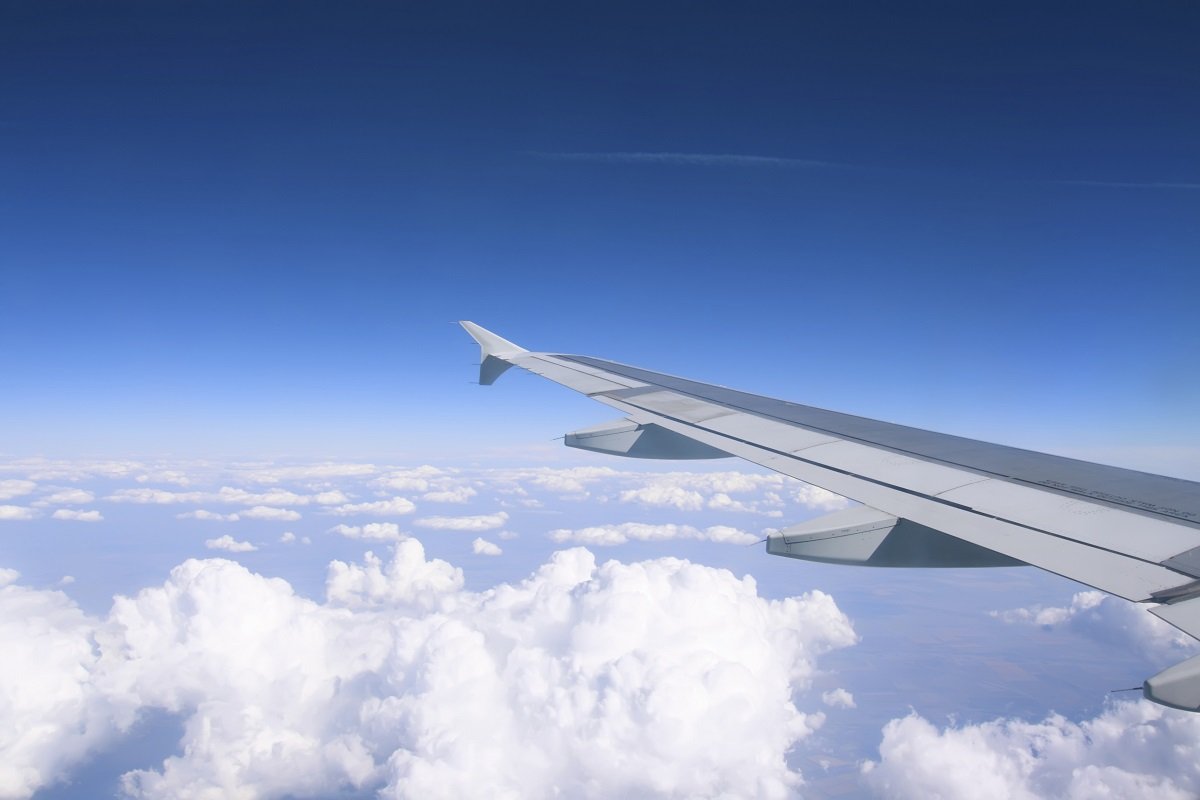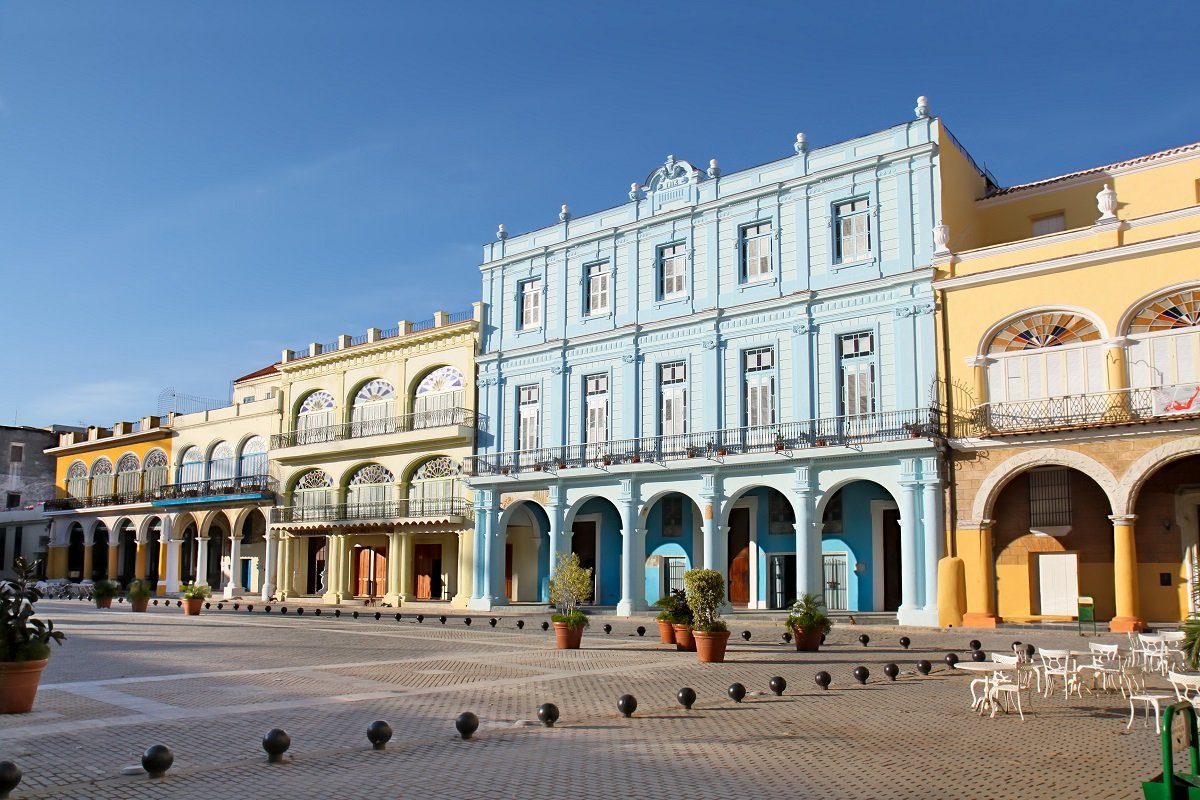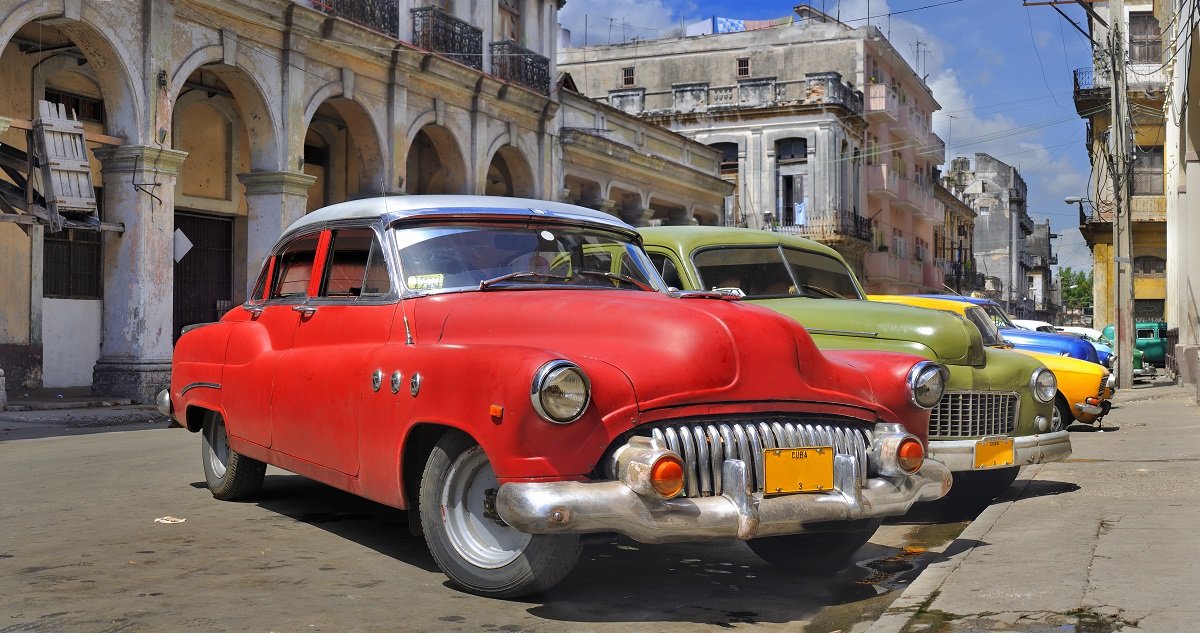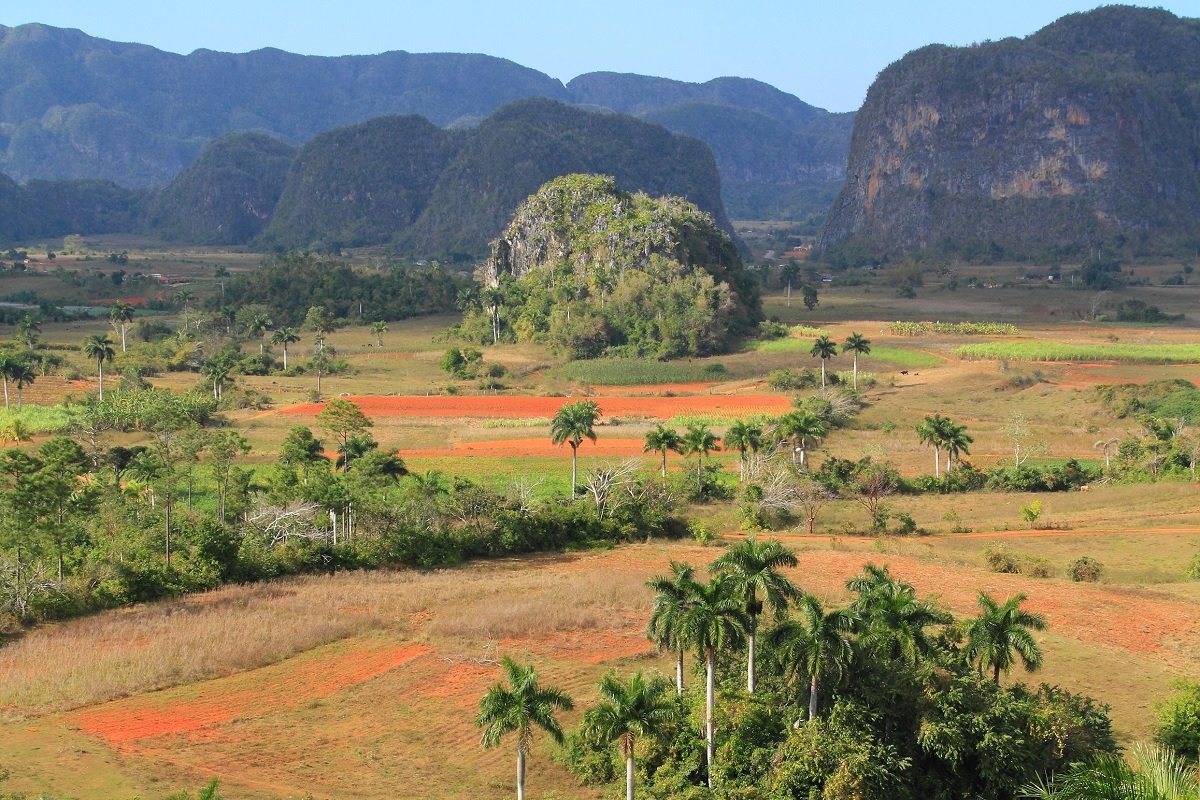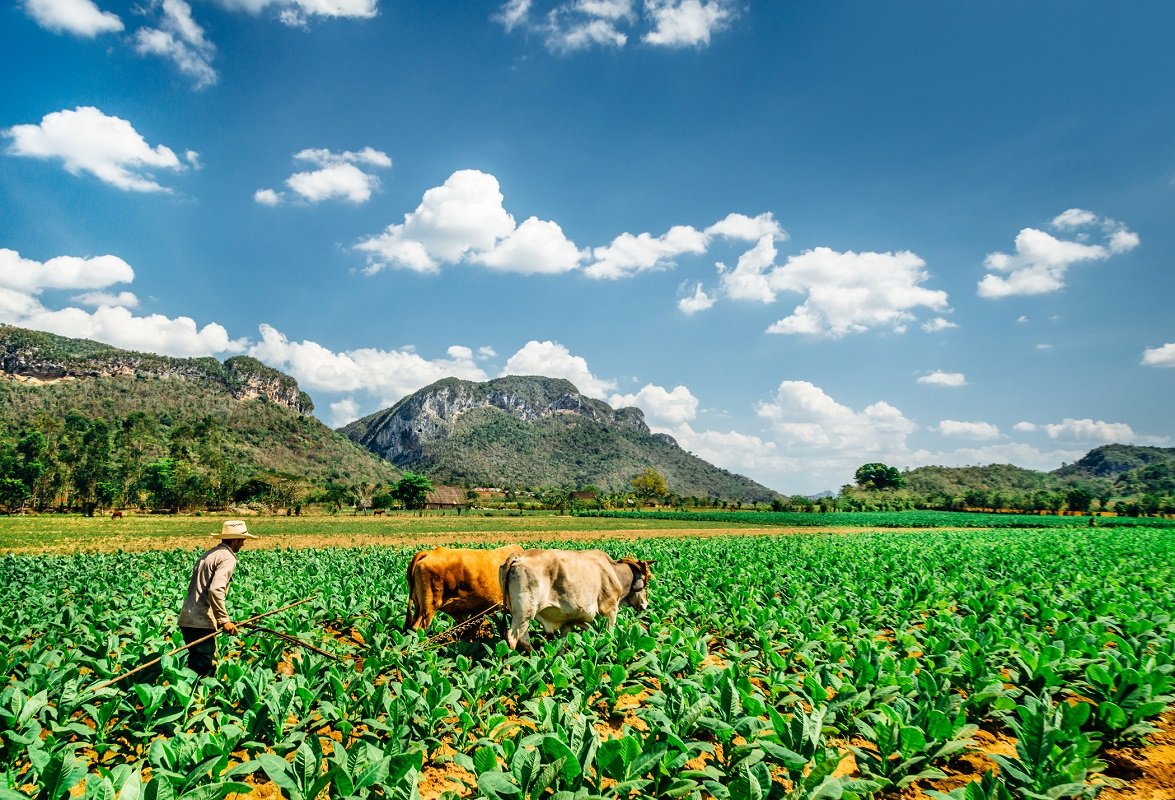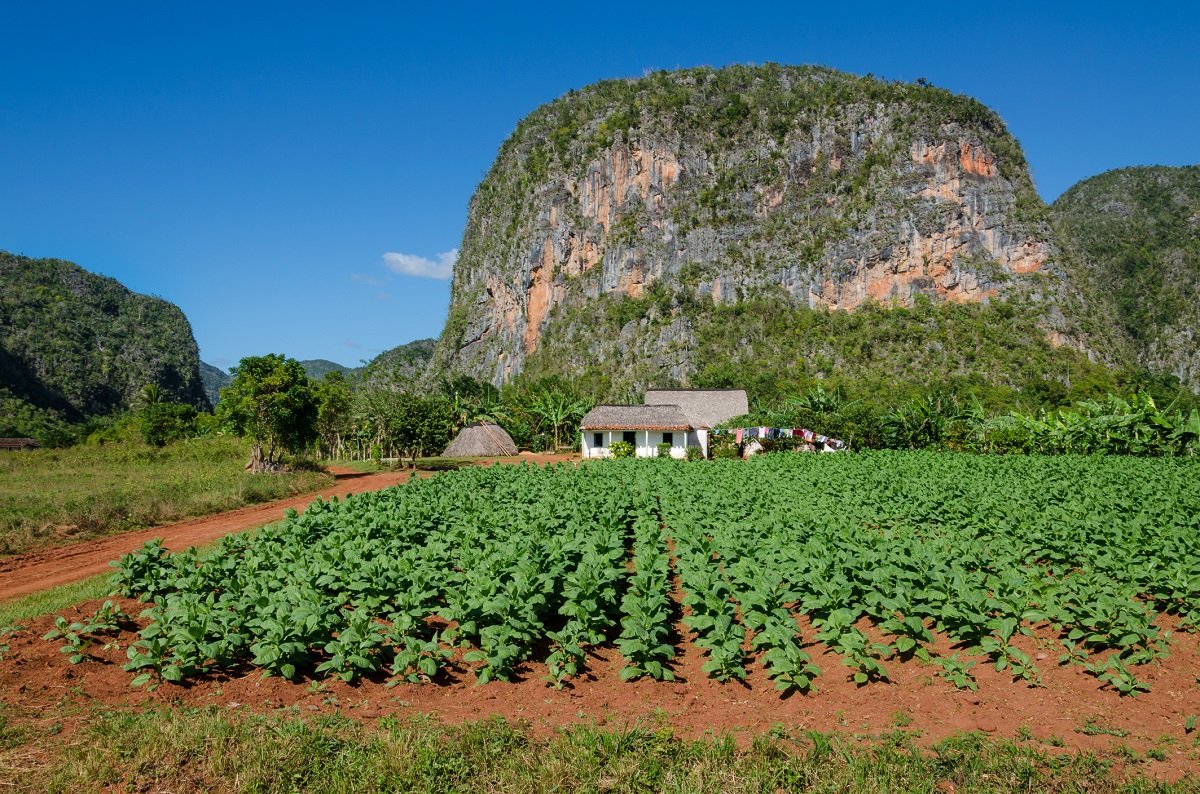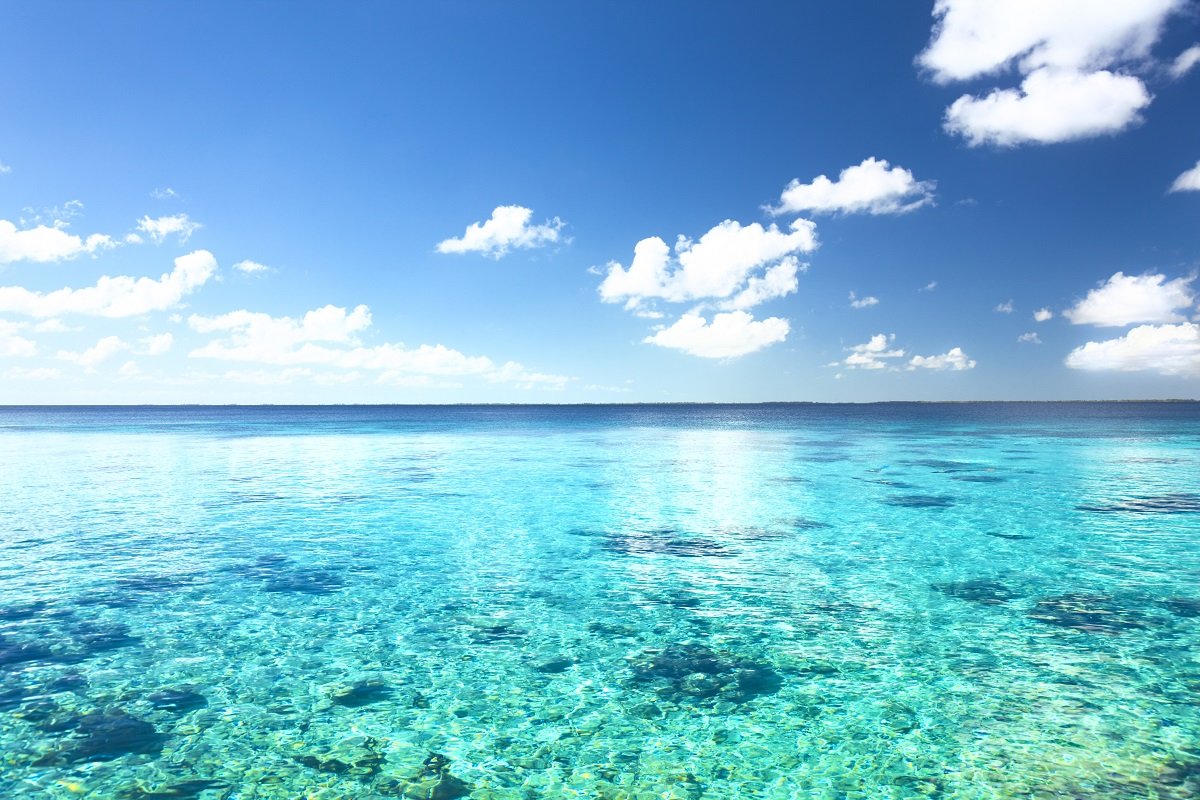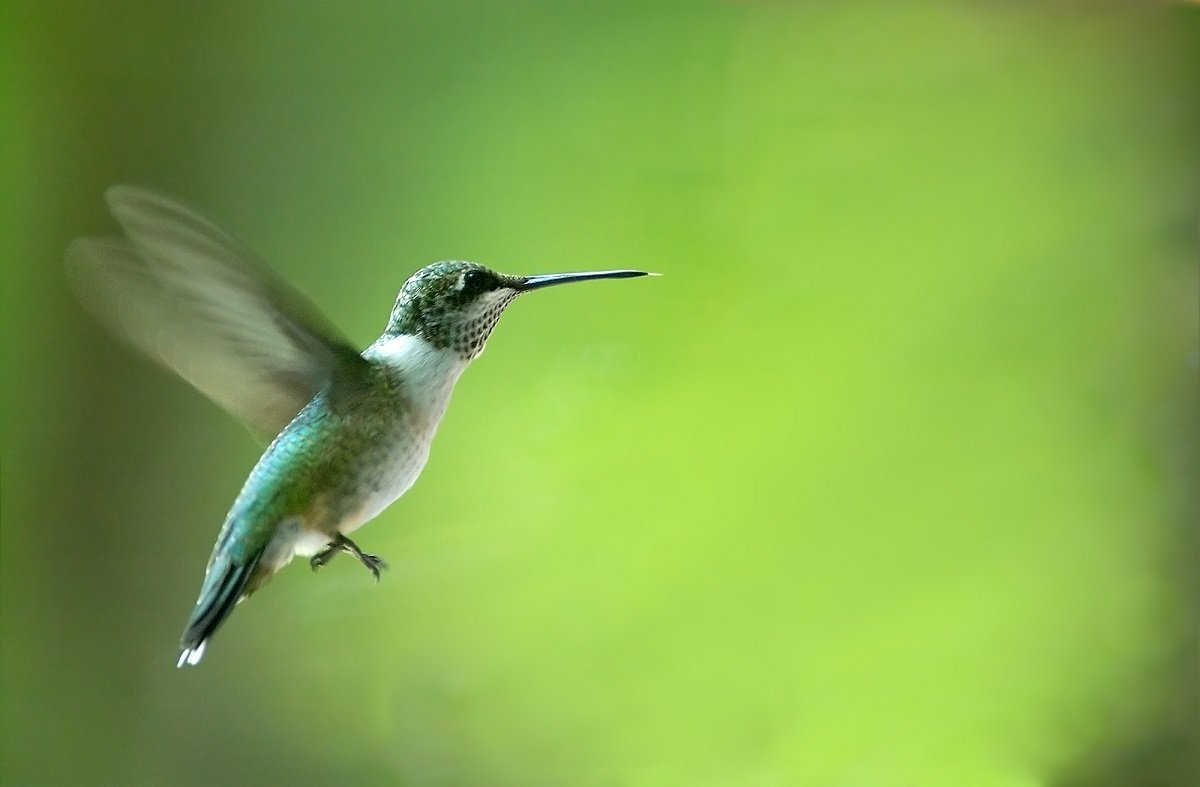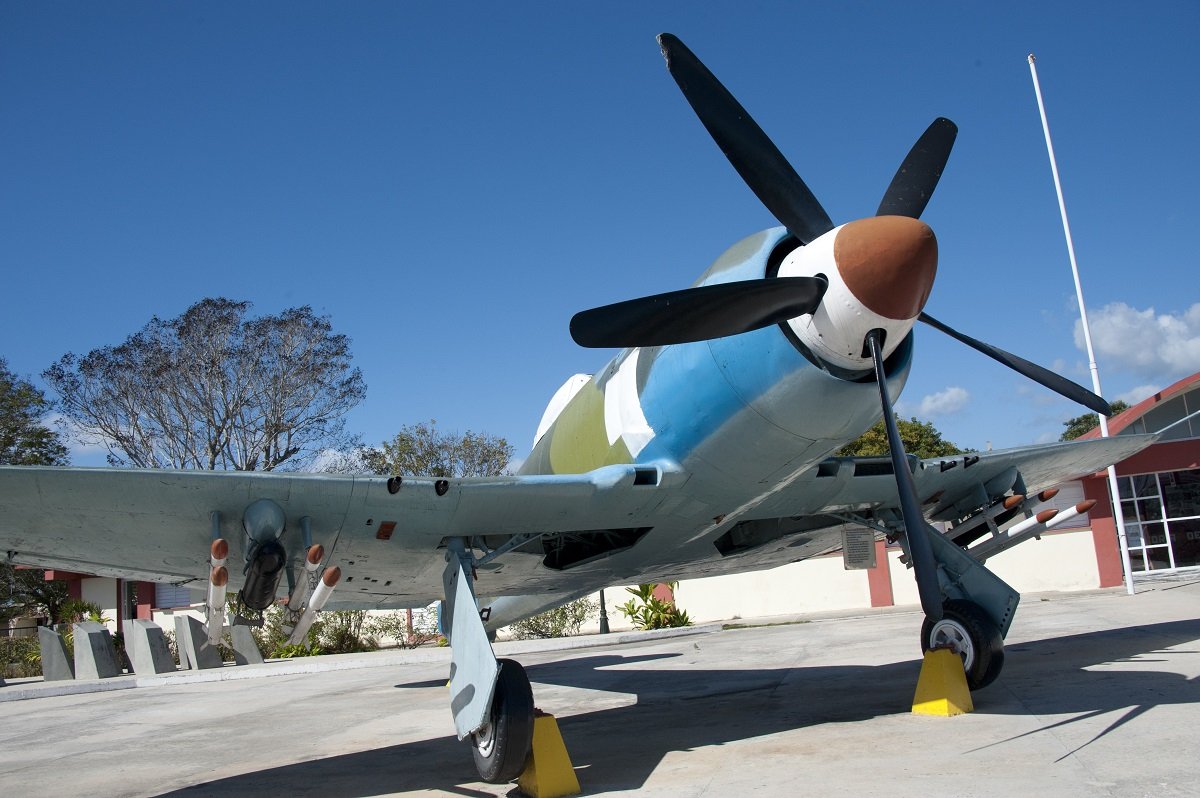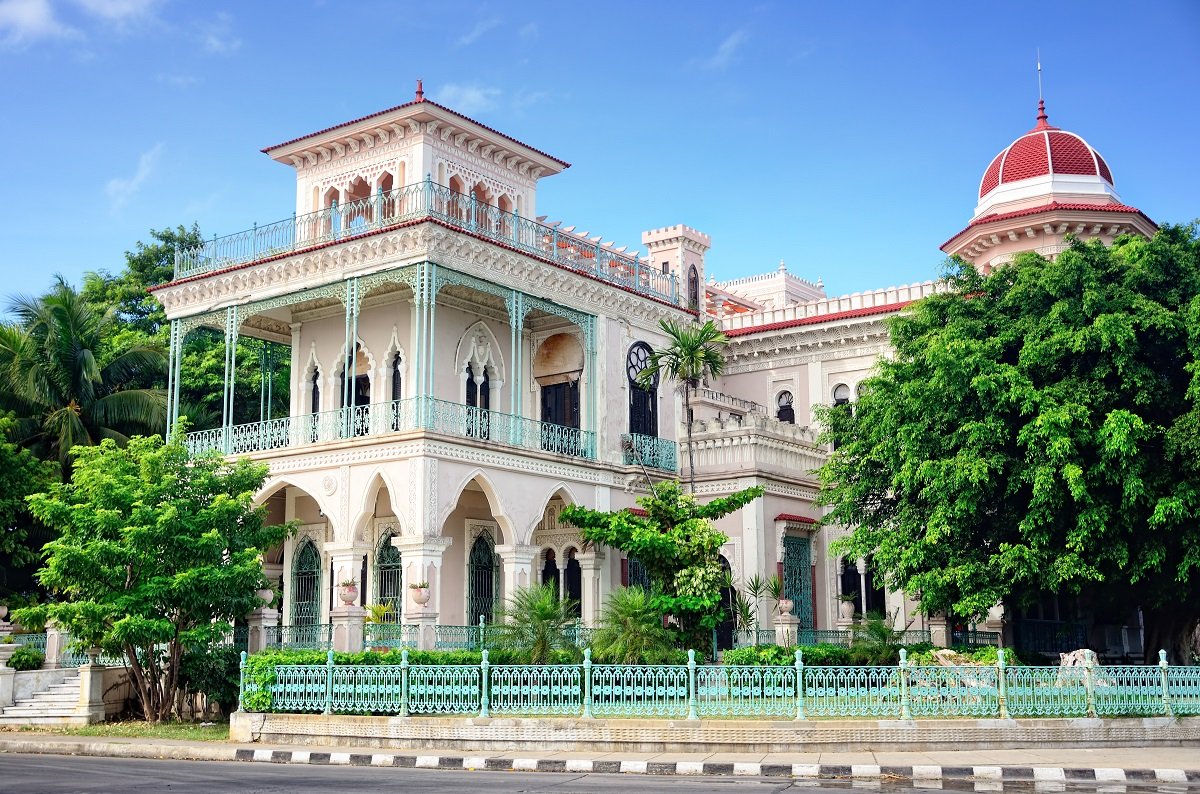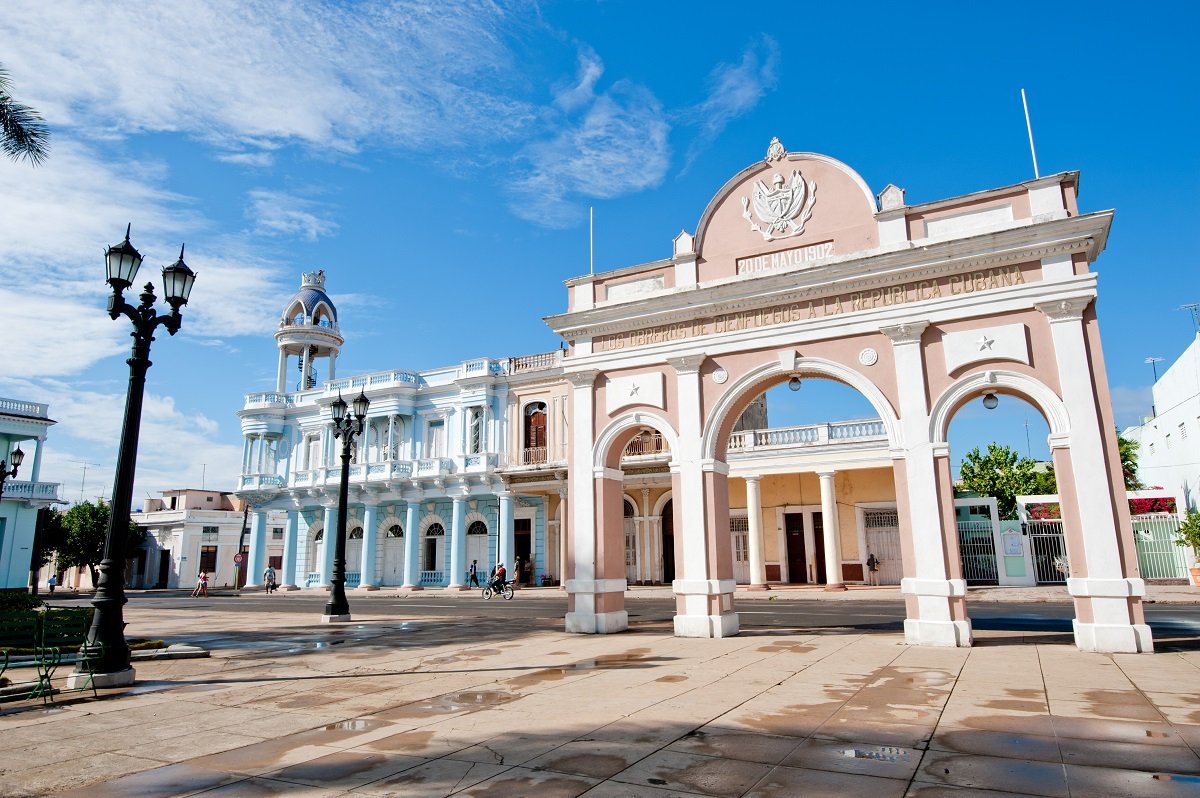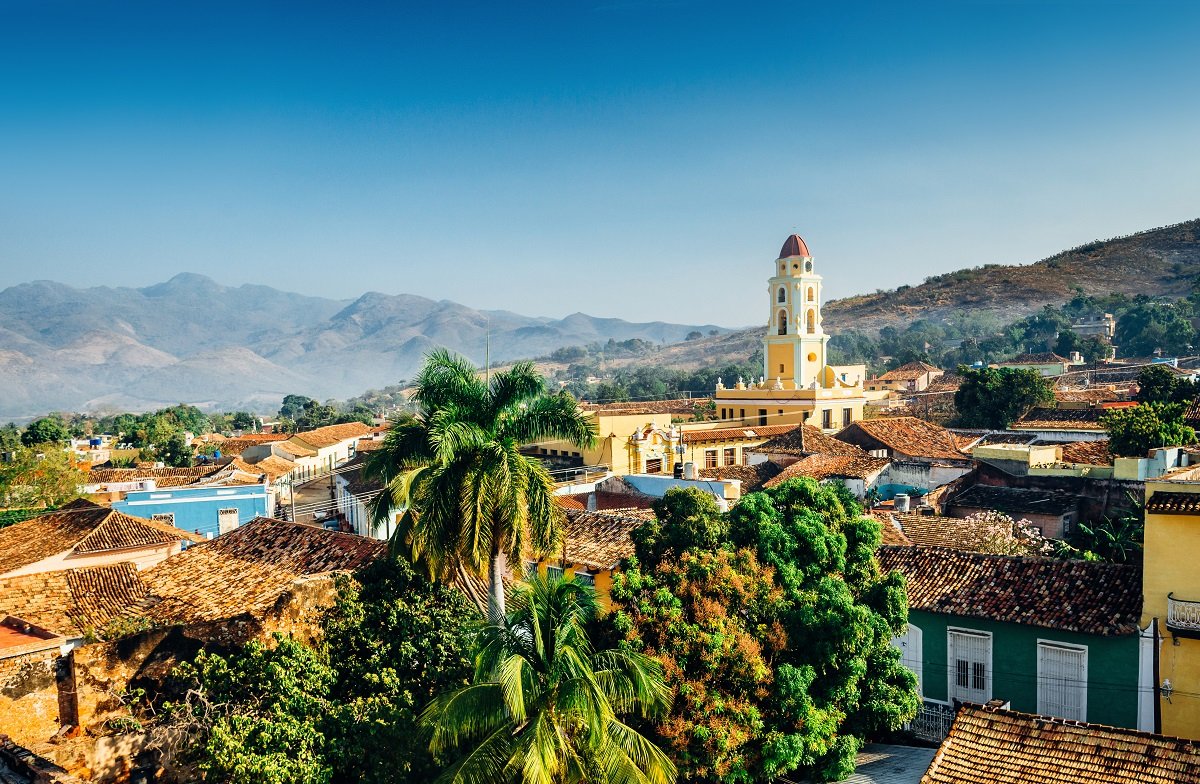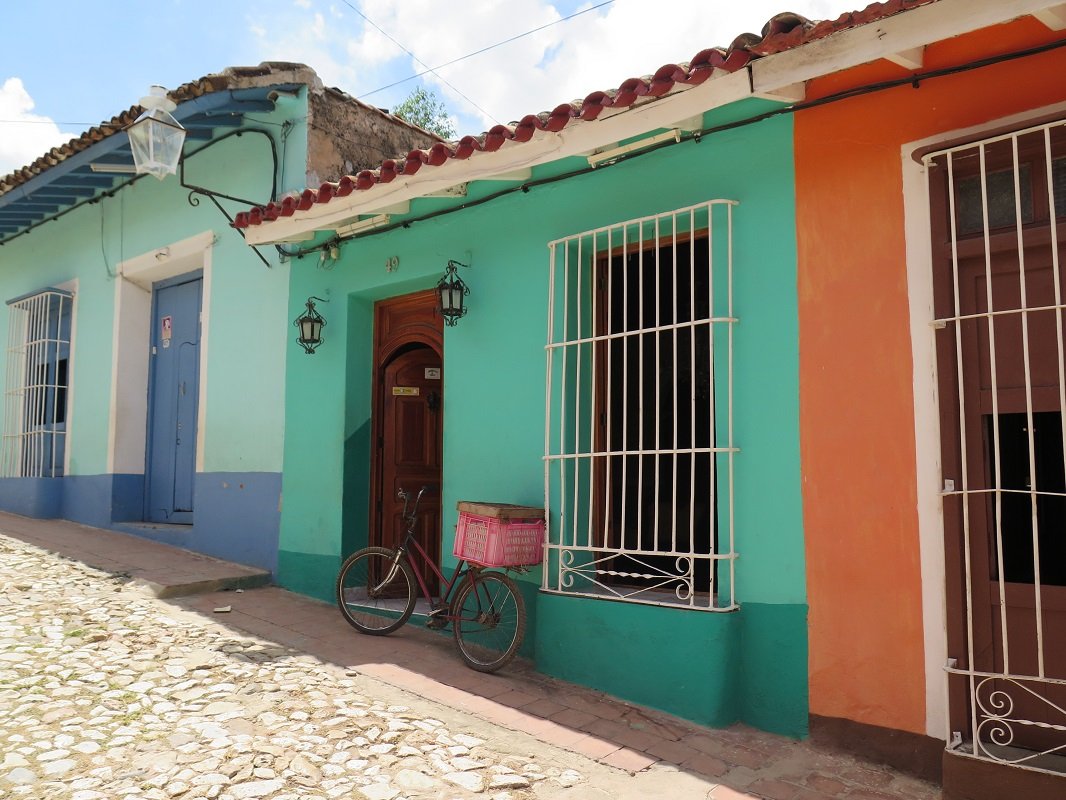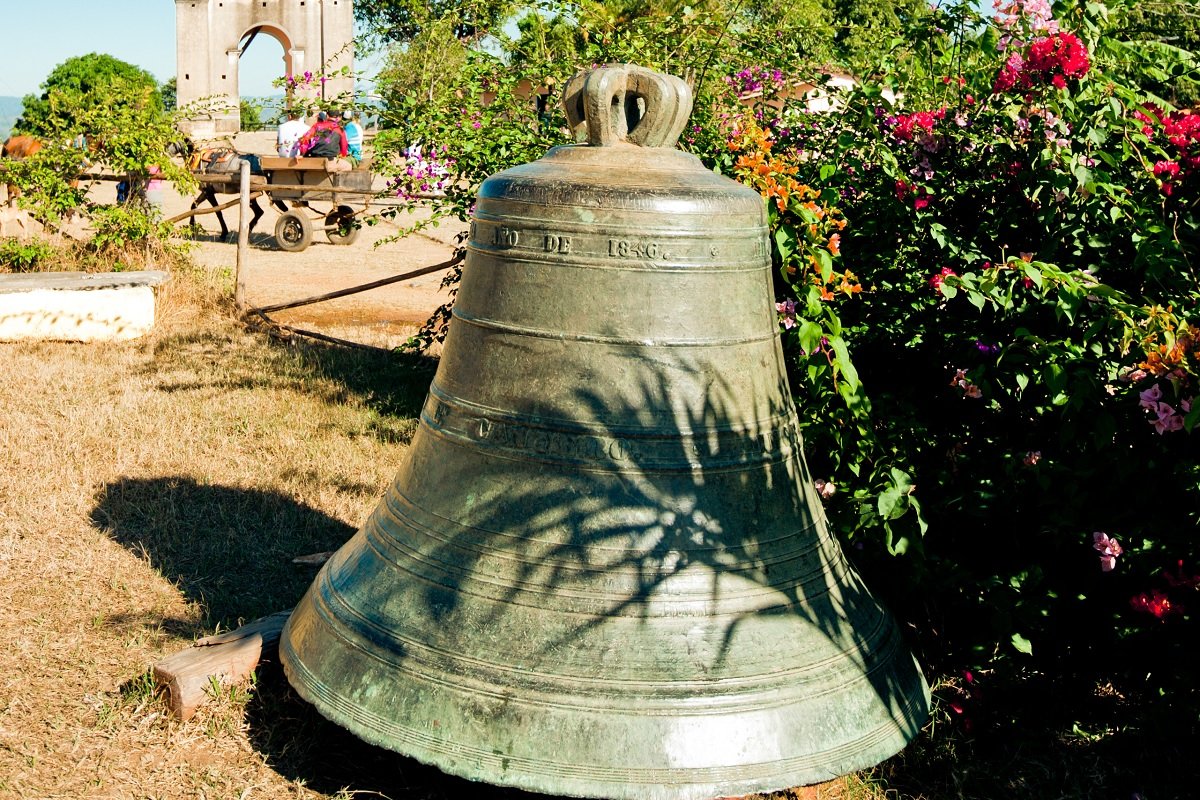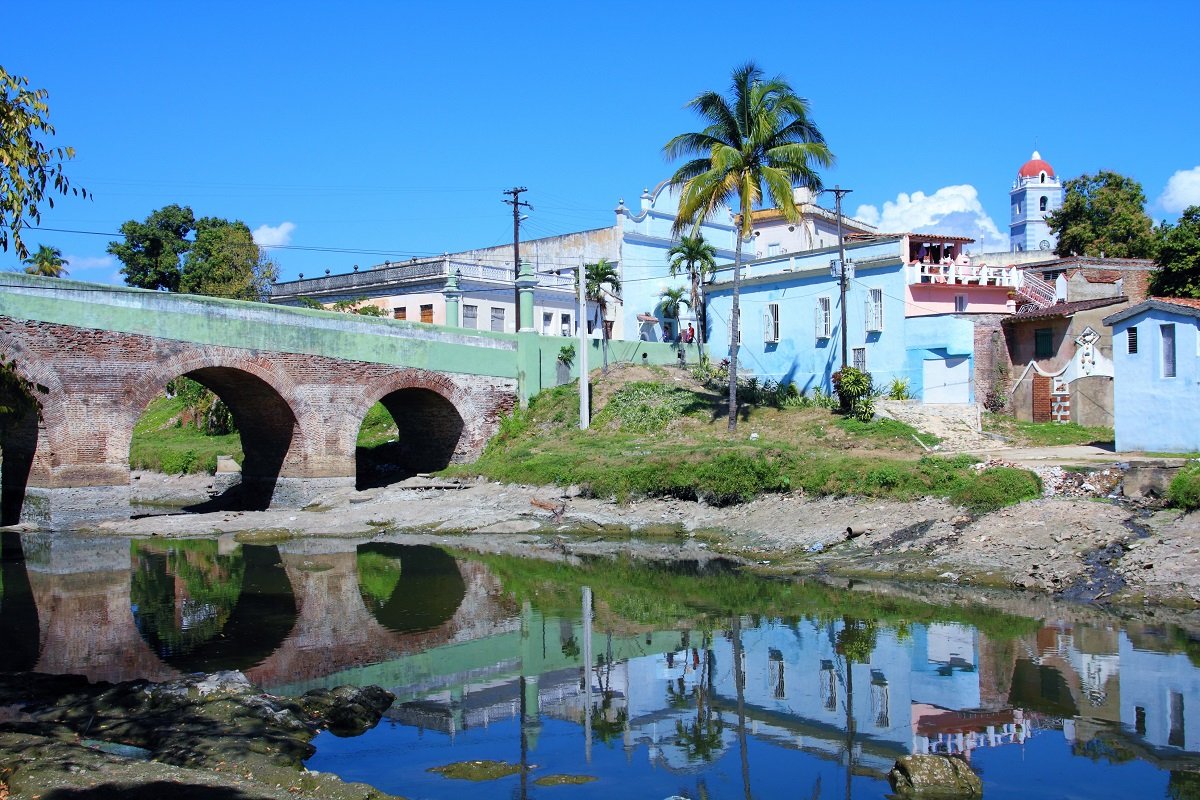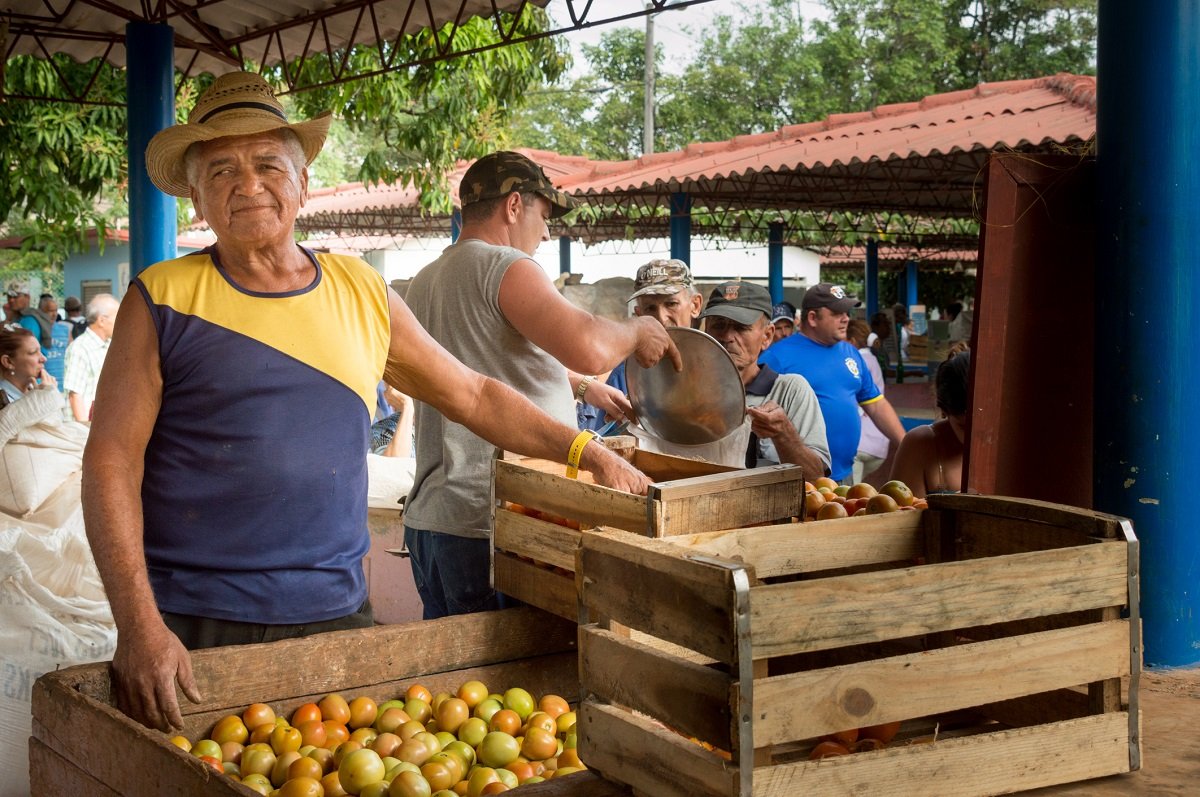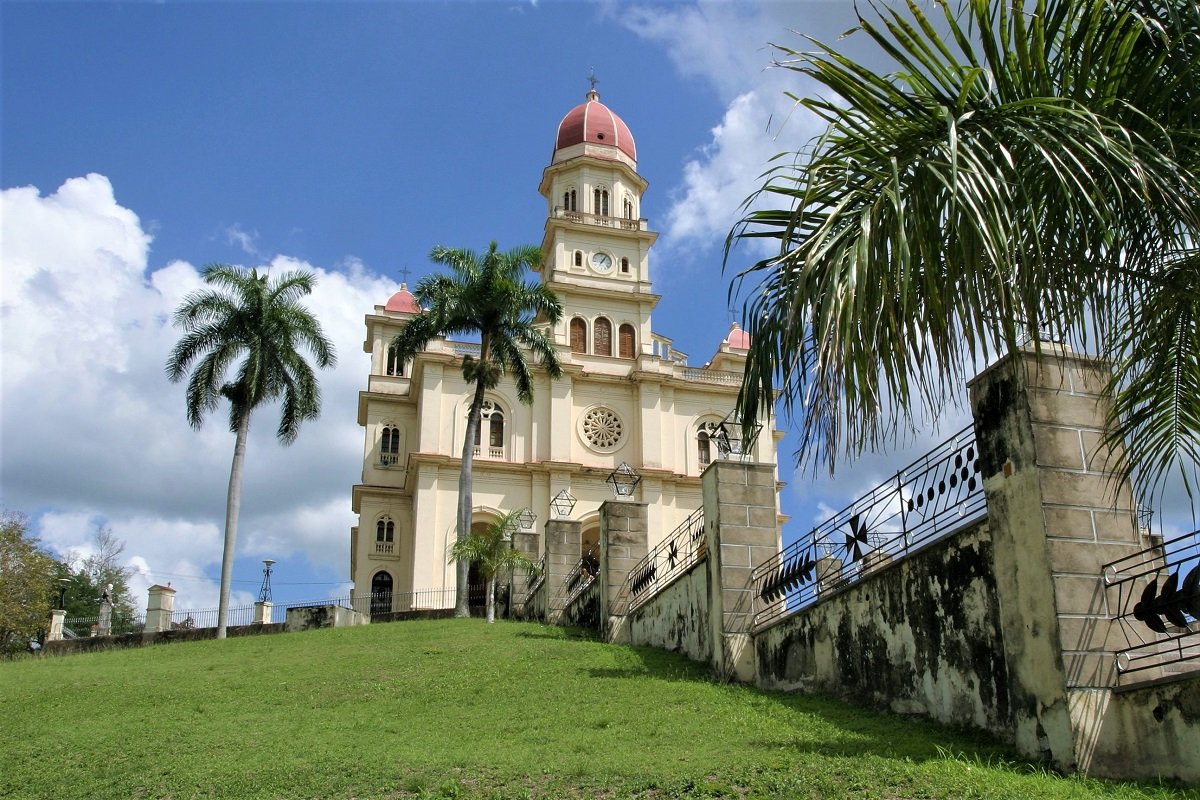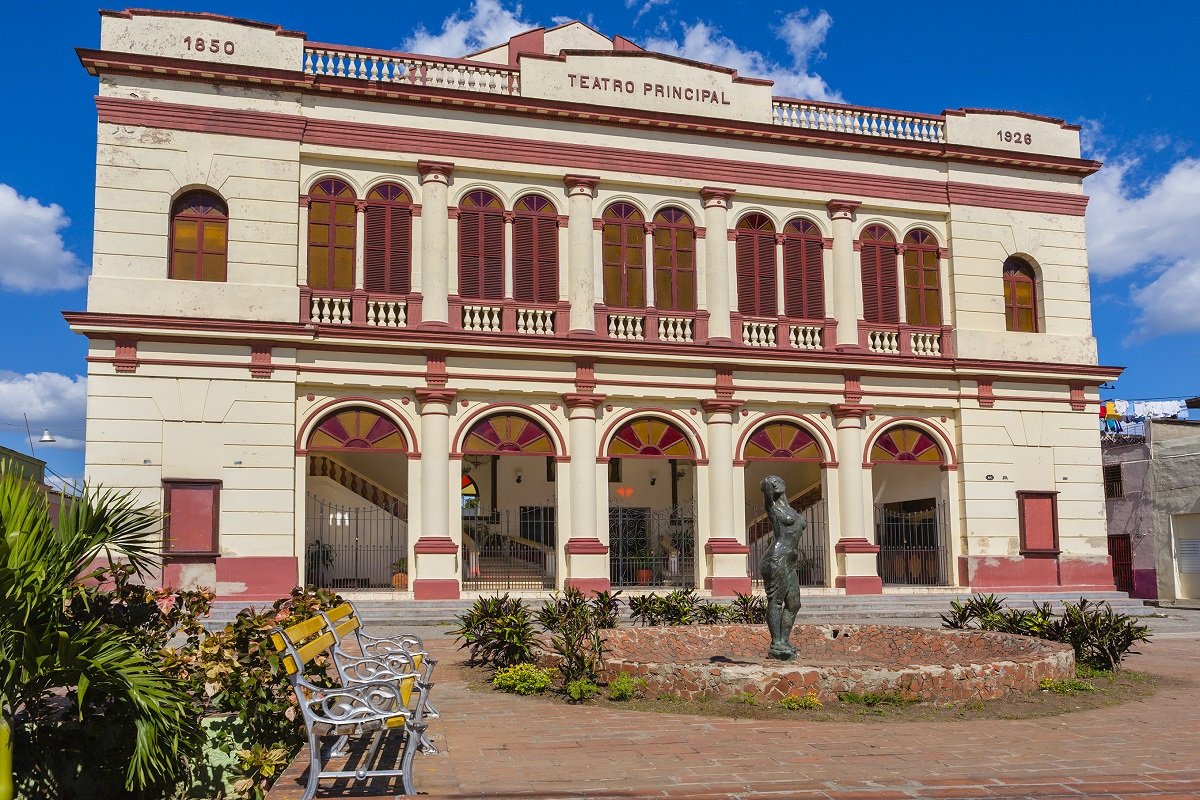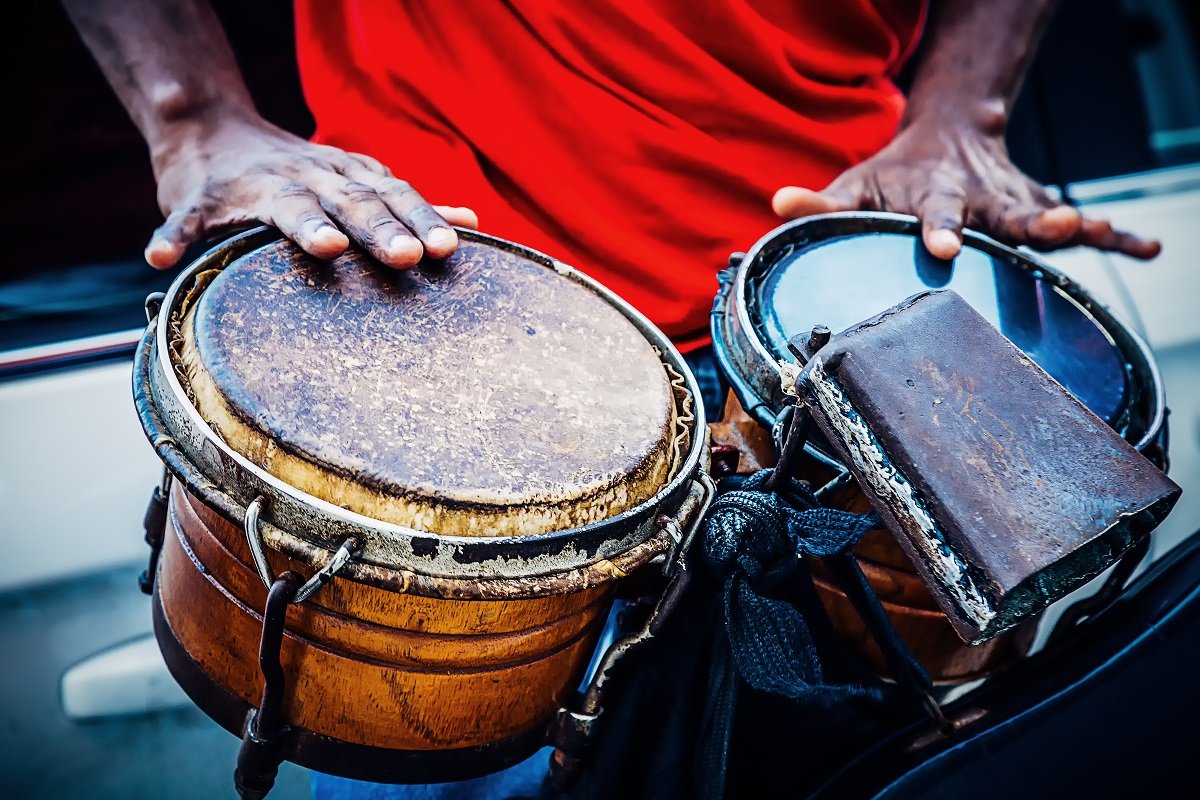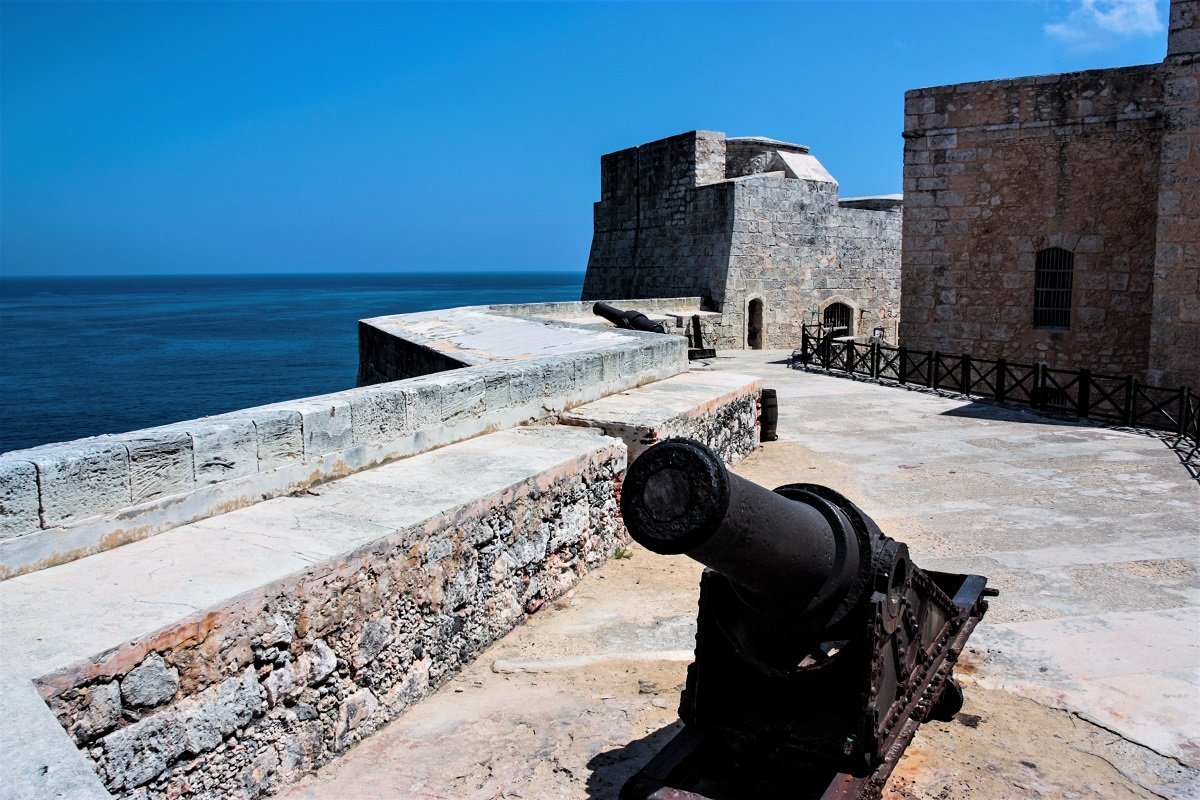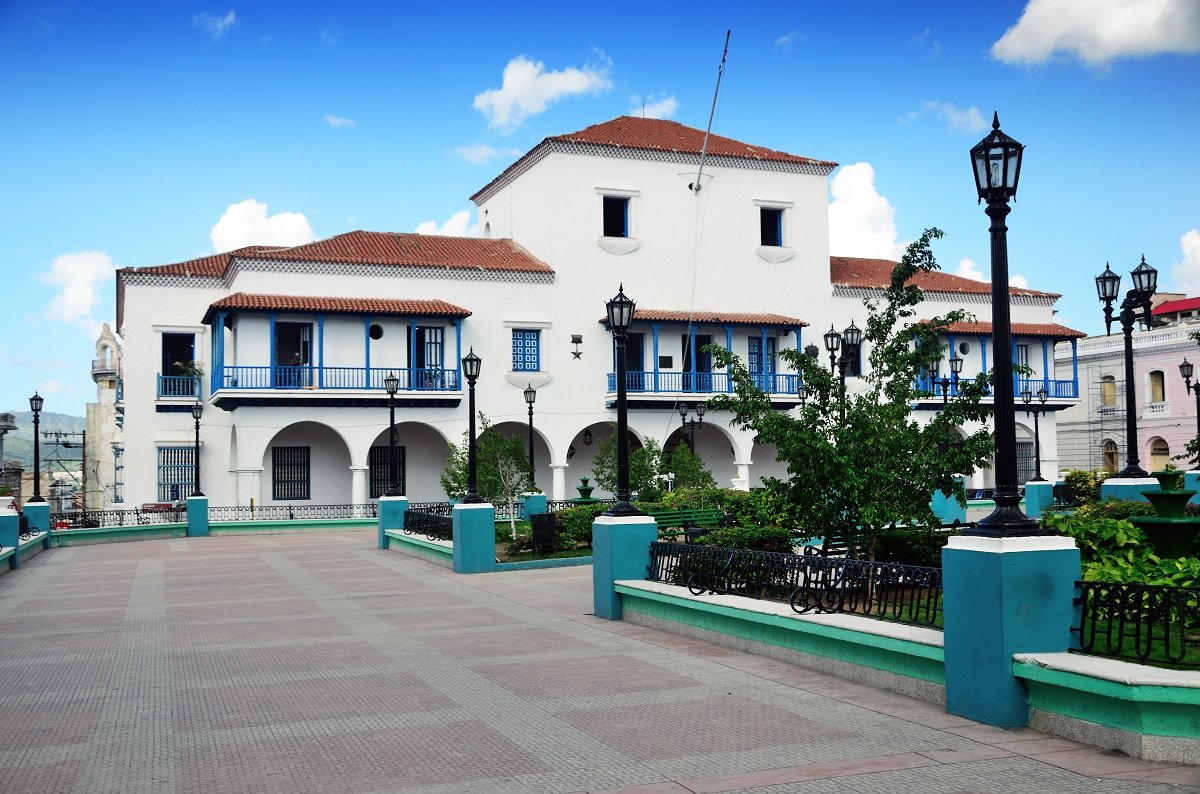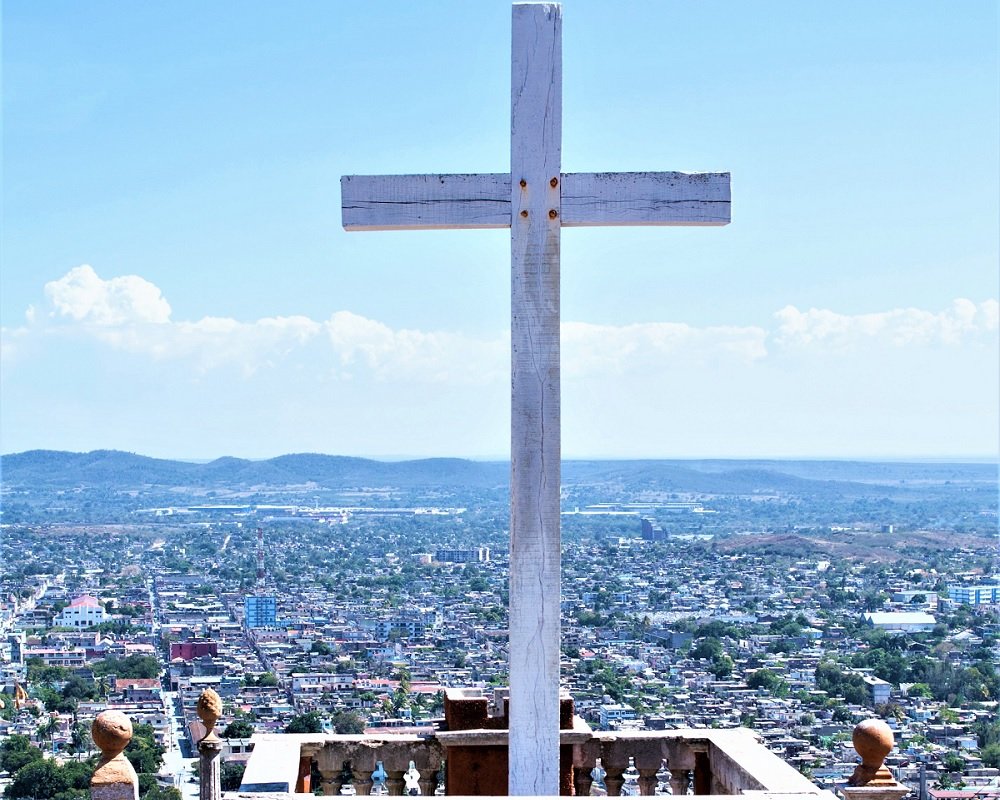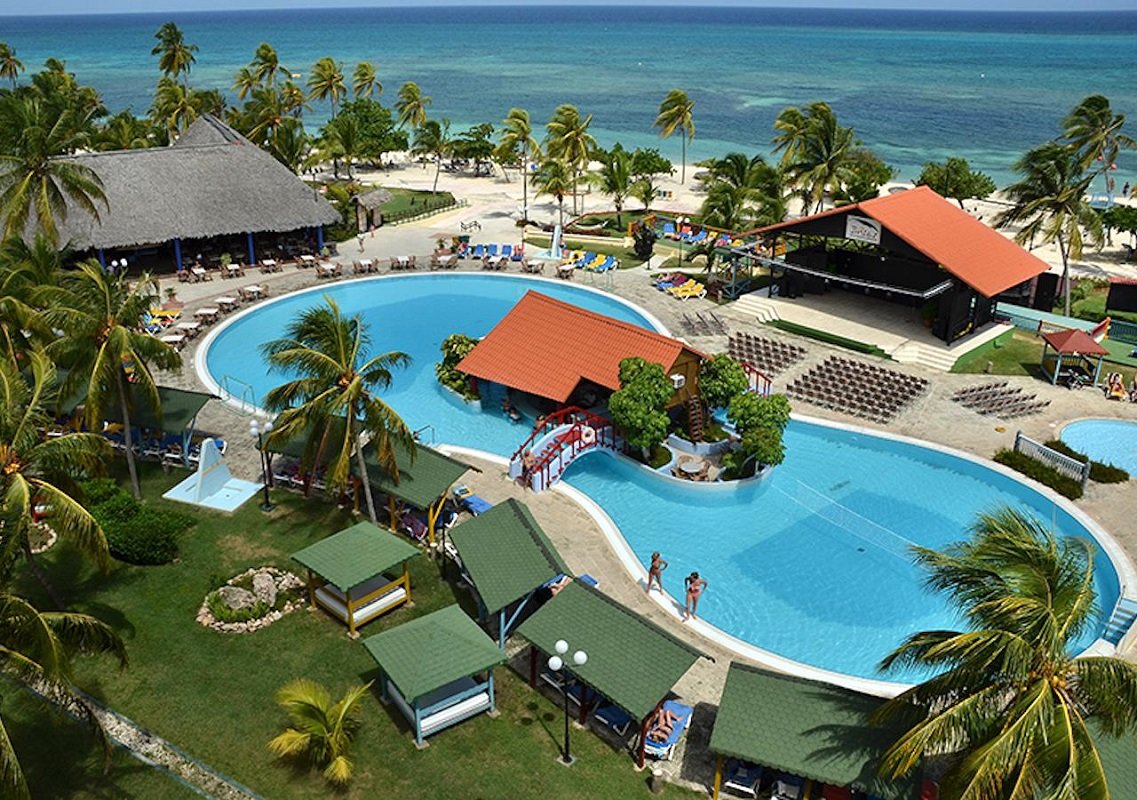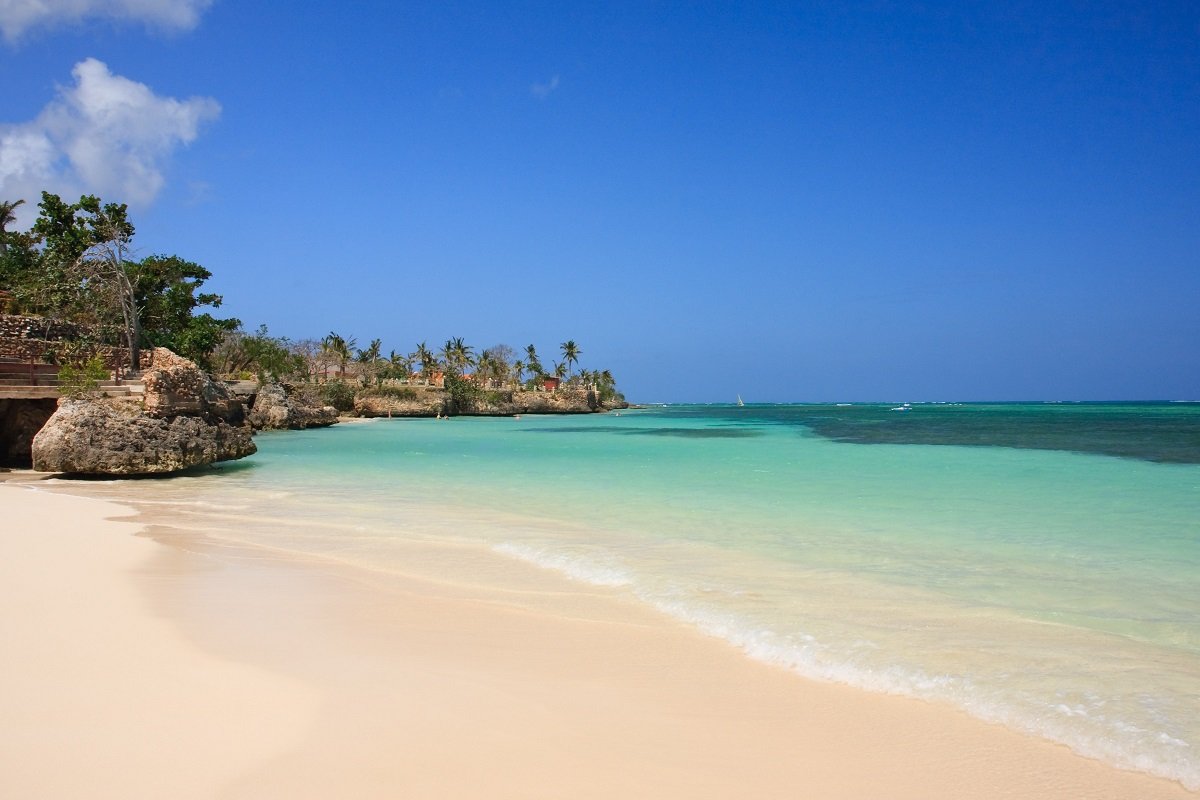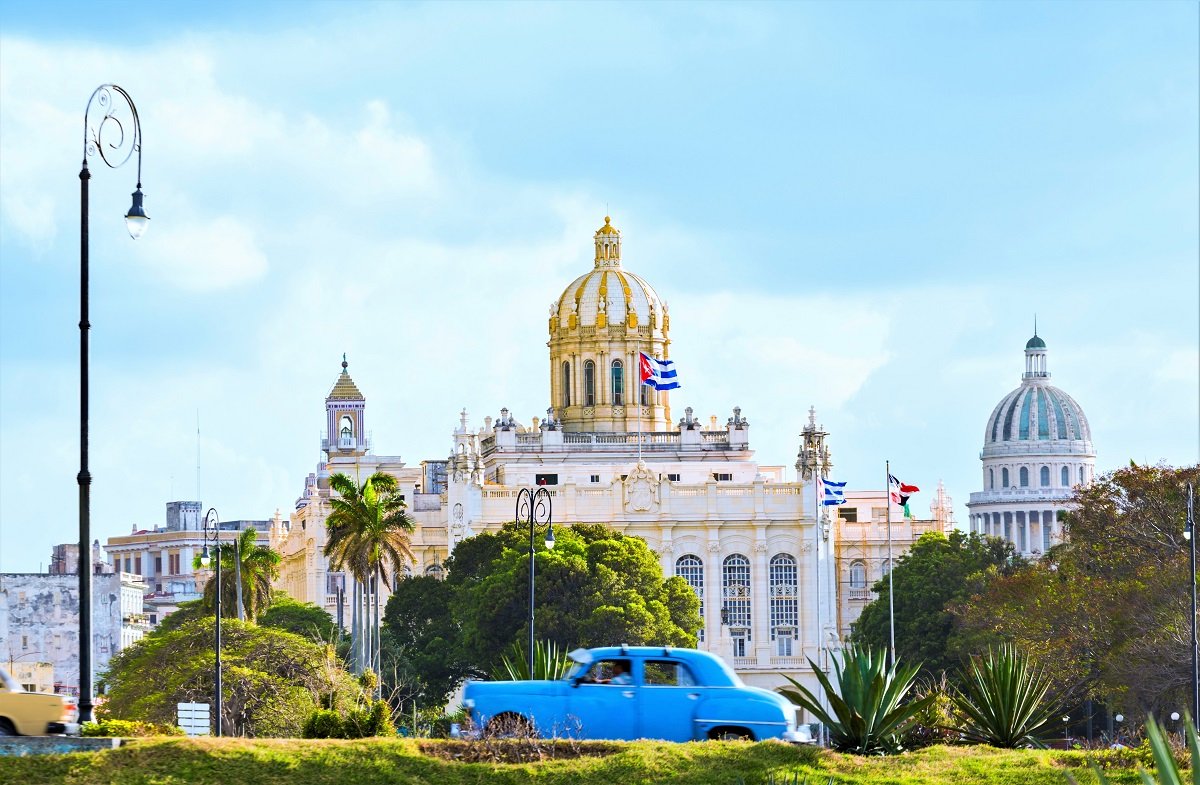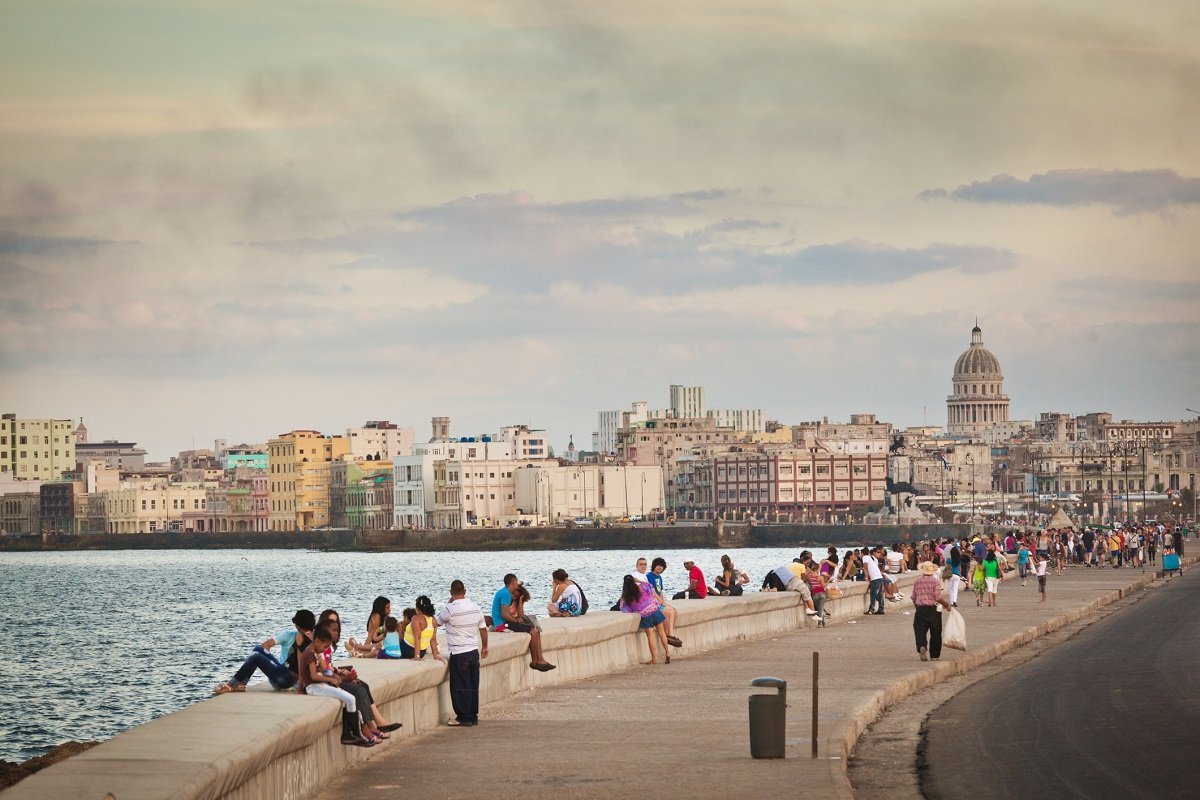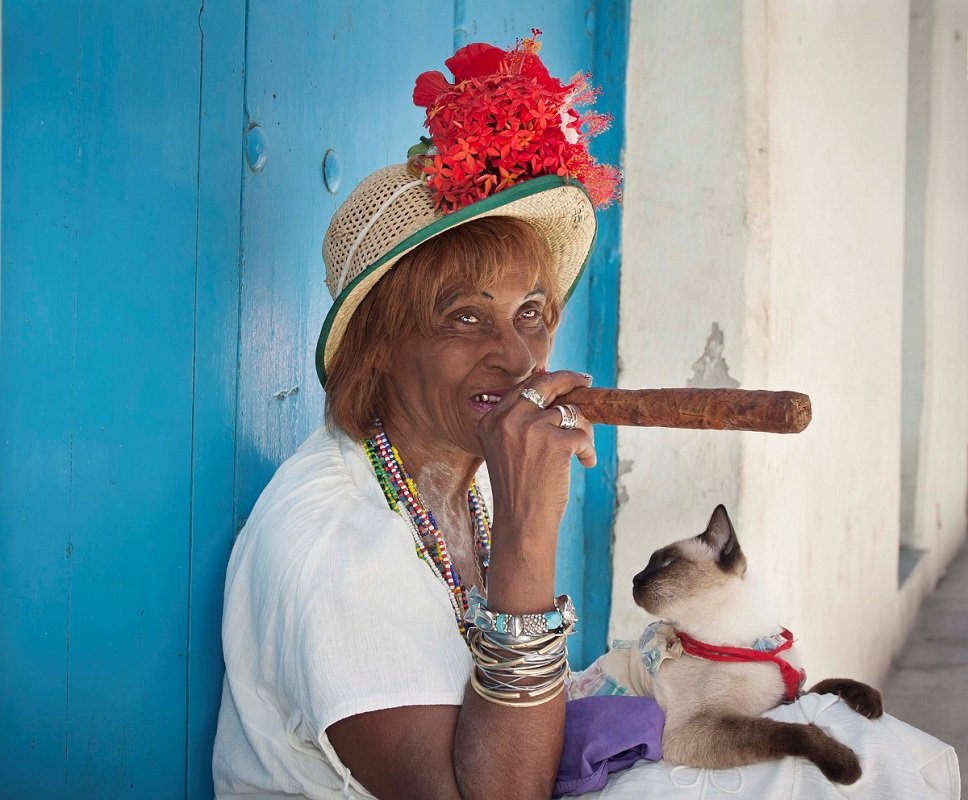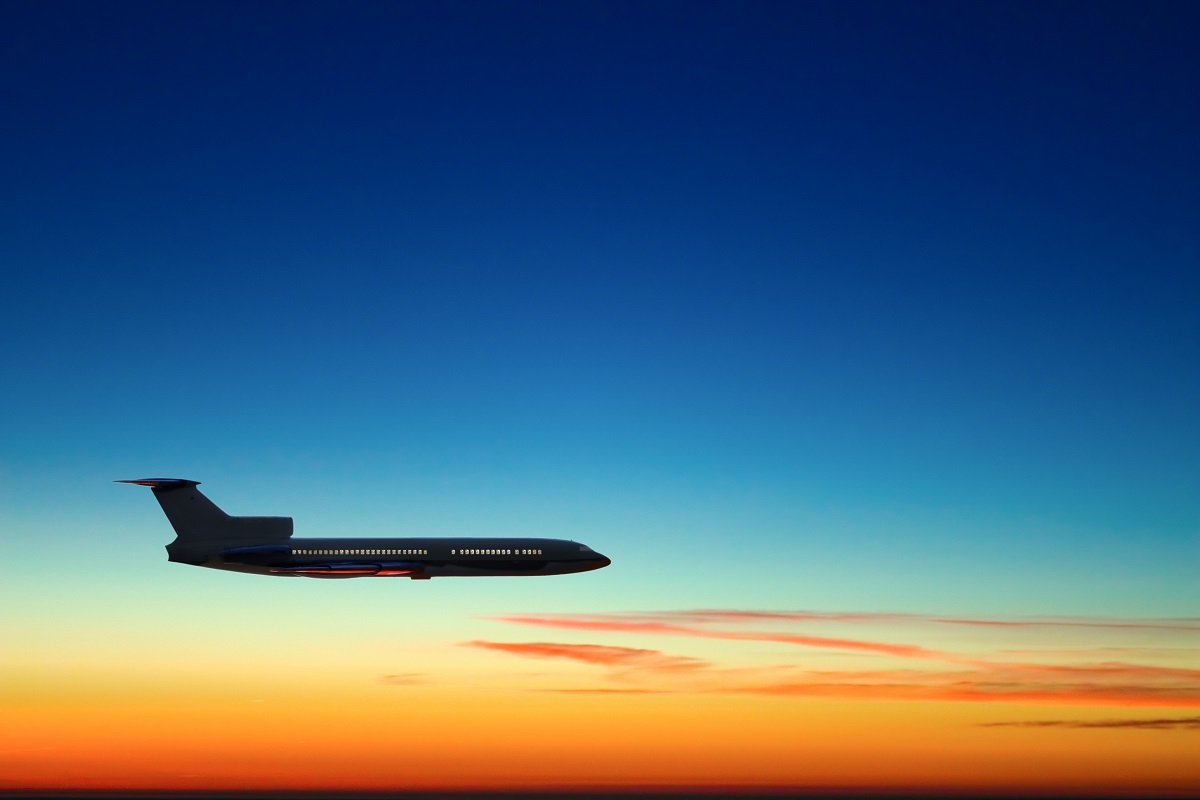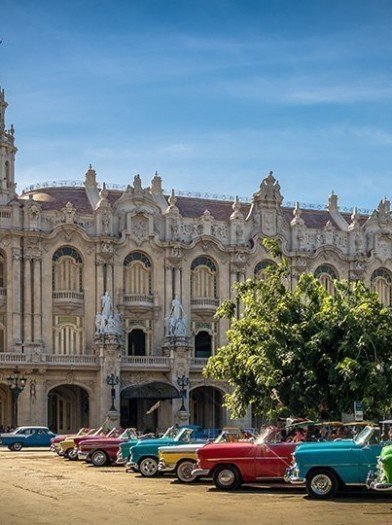Confidence Guarantee - Read more
16 days
Cuba self-drive holiday – experience Cuba from west to east
Self-drive holiday in Cuba from west to east. Discover Havanna, Viñales Valley, Cienfuegos, Trinidad, Camagüey, Bayamo, Santiago de Cuba and the beautiful beach in Guardalavaca.
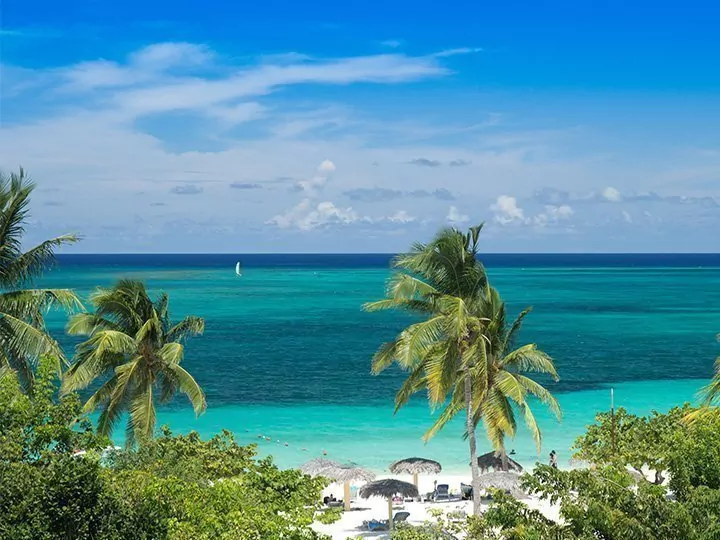

16 days
Cuba self-drive holiday – experience Cuba from west to east
Self-drive holiday in Cuba from west to east. Discover Havanna, Viñales Valley, Cienfuegos, Trinidad, Camagüey, Bayamo, Santiago de Cuba and the beautiful beach in Guardalavaca.
What is included in the price?
This package includes the following
- Return flights from the UK to Havana (enquire regarding direct flights)
- 1 domestic flight: From Holguin to Havana
- Transfers from and to the airport in Havana
- 9 days’ car rental (days 2-11) including free mileage, the first tank of petrol and mandatory insurance*. Model Peugeot 301 or similar
*Please note: Drivers aged 21-24 and 76-80 are required to pay an extra premium of USD 15 per driver per day. Remember to state the driver’s age when booking - 12 nights’ accommodation in good hotels and casa particulares incl. breakfast
- 2 nights’ accommodation at a beach hotel in Guardalavaca with all-inclusive
- Welcome meeting and sightseeing in Havana’s old quarter
- Tourist visa for Cuba
- Individual tour, however, all excursions are in small international groups with local English speaking guides
- Telephone hotline staffed 24/7 throughout your trip
- ATOL certificate included
- Departure guarantee – The price is valid when at least 2 people travelling. Please ask for a price if you are travelling alone
- Possibility of daily departure
THE TOUR IN SHORT
On this self-drive holiday in Cuba, you get to experience the country’s highlights from west to east. Having your own car gives you a wonderful sense of freedom, and Cuba is a relatively easy country to drive around. All accommodation is pre-booked and you can visit the country’s attractions at your own pace, with as many stops as you like.
Setting out from Cuba’s beautiful capital of Havana, your self-drive adventure first takes you to the beautiful and fertile countryside of the Viñales Valley. From here, you drive to the historic, colonial gems of Cienfuegos and Trinidad. You will pass many exciting places on the way to eastern Cuba, where you visit Cuba’s second largest city of Santiago de Cuba. The city is known for its history, music and unique Caribbean atmosphere.
The drive ends at Guardalavaca’s white sandy beach with palm trees and turquoise blue waters before heading back to Havana.
Why choose this tour
- Experience all of Cuba from West to East in a rental car with the freedom to plan your activities on your own and to stop whenever you like
- Look forward to the colourful colonial towns of Havana, Cienfuegos, Trinidad and Camagüey
- Feel the unique Afro-Caribbean mood through food and music in the country’s second-largest city, Santiago de Cuba
- Relax at Guardalavaca’s beautiful Caribbean beach after an exciting self-drive adventure in Cuba
Our prices always include
- All international and domestic flights
- All destination transfers
- All specified excursions and activities
- All accommodations
Detailed Itinerary
Day 1:
Departure from the UK
Departure day, where you will fly to Havana with connecting flights along the way. In Havana, you will be met by a driver who drives you to your accommodations.
Day 2:
Welcome meeting & sightseeing in Havana - Car pick-up
After breakfast, our partner in Cuba will meet you at your accommodation and hold a short welcome meeting of approx. 30 minutes. This is an opportunity for you to run through your tour together and get answers to any questions you may have about the tour or other practical questions about travelling around Cuba.
Your exciting guided walk around Havana’s beautiful old town, which is on UNESCO’s list of sites worthy of preservation, will then start. Look forward to experiencing the cosy cobbled streets, where impressive squares, cathedrals and colonial-era buildings take you back to ancient times. You experience the contrast between the newly-renovated and well-maintained streets and buildings, as well as the more dilapidated areas that make Havana so unique. Highlights of the tour include Plaza Vieja, Plaza de San Francisco, Plaza de la Catedral and Plaza de las Armas, which is the city’s oldest square where the city museum and the Governor’s Palace are located.
You will pick up your hire car in the afternoon/evening, so you’ll be ready to set off on your adventure the following morning.
Day 3:
Havana – Viñales Valley
This day marks the start of the self-drive programme, and it is time to leave Havana and head for Viñales Valley, where delightful countryside awaits.
The landscape is predominantly made up of fertile valleys covered in banana palms and mango trees, tobacco fields and the huge limestone mountains known locally as mogotes. The farmers here still grow crops and tobacco in the old-fashioned way, using ox-drawn carts. The Viñales region is famous for the quality of its tobacco plants; it supplies the leaves that are subsequently rolled in the cigar factories of Havana to make world-famous brands such as Cohiba and Montecristo. We also have the opportunity to visit one of the most spectacular stalactite caves in Cuba, where the indigenous tribes previously made their homes, and to sail the long river that flows through this unique setting.
The day’s mileage: approx. 210 km
Day 4:
Viñales on your own
You spend the day at your leisure in pleasant Viñales. You can explore this beautiful area on your own, or pick one of the excursions below.
Accommodation:
Day 5:
Viñales Valley – Península de Zapata – Cienfuegos
Today, you will be driving from Viñales Valley to the Península de Zapata, site of one of the most important ecosystems in the country and the most extensive area of wetlands in the Caribbean. The peninsula is famous for the richness of its flora and fauna, which comprises 900 different species of plant and 171 different species of bird, including parrots and humming birds – the smallest bird in the world. There is also a crocodile farm, and the swamps themselves are home to around 100,000 crocodiles. The farm provides insight into the life of the crocodiles in more protected surroundings, and if you are lucky, you may arrive in time to watch them being fed. The Península de Zapata is also ideal for hiking, bird-watching and water sports.
At the famous Bay of Pigs, which has played a key role in international events, you can see monuments to the United States’ invasion attempt in 1961. To find out more about the story, visit Giron Museum. The bay itself has two lovely beaches: Playa Larga and Playa Giron. It is a great place to go diving because of the geographical location of the peninsula, which is protected from the cold front from the north during the winter. On the beautiful seabed at Playa Giron, you can experience underground grottoes and rock formations, as well as all kinds of exotic fish. Another treat nearby is Caleta Buena, where you will find different species of coral, sea trees and sponges. Later in the day, you can continue on to the town of Cienfuegos, where you will spend the night.
The day’s mileage: approx. 420 km
Day 6:
Cienfuegos – Trinidad (approx. 90 km)
You have the morning to explore Cienfuegos, otherwise known as the “Pearl of the South”, thanks to its scenic location on the Caribbean coast in southern Cuba.
Cienfuegos was founded in 1819 by a group of French immigrants from the USA. The city found itself on the global map in 1957, when a group of young people with Fidel Castro’s guerrilla took over its military base. This was a short-lived victory, and the uprising was quickly defeated by Batista.
Today Cienfuegos is a pleasant city with very well-preserved buildings, and is for this reason included on UNESCO’s World Heritage List. Take a walk down to Parque Marti, the city’s central square, where you will find sights such as the well-preserved “Tomas Terry” theatre from 1890, and the spectacular mayor’s office.
You can also walk along the seafront to Punta Gorda, where you will find some of the most beautiful buildings in the city. Enjoy lunch or a drink at Palacio de Valle, a stunningly beautiful building that looks as if it came from an Arabian fairytale.
In the afternoon, you drive on to Trinidad.
The day’s mileage: approx. 90 km
Day 7:
Trinidad
Trinidad is the biggest sugar-growing area in Cuba, and probably the most beautiful colonial city on the island. It is set between the Caribbean Sea and the Escambray mountains. Like Cienfuegos and the old part of Havana, Trinidad is inscribed on the UNESCO World Heritage List. The city was founded in 1514 and is distinguished by pastel-coloured old houses and palaces dating back to the colonial age. The best place to start exploring the city is the picturesque Plaza Mayor square, which is ringed by a number of museums including the Museo Romantica, which houses collections of jewellery, porcelain, paintings and sculptures that once belonged to the Spanish nobility. The square is also the site of the cathedral: Iglesia Parroquial de la Santisima Trinidad, one of the biggest churches on Cuba. At Segarta square, you will find the oldest palaces in the city, beautifully decorated with wonderful chalk paintings. These magnificent palaces were all built by rich sugar barons between 1777 and 1850, i.e. during the golden age of the city.
Day 8:
Trinidad – Sancti Spiritus – Camagüey
Today, you will be heading for Camagüey. En route, you will pass through Sugar Mill Valley, which is just outside Trinidad and has been declared a world heritage site by UNESCO. The fertile valley, which is bordered by lush green mountains, is dotted with old haciendas, slave quarters and sugar mills – of which more than 50 were built here in the 1800s. It was the Spanish who brought slaves here from Africa in the colonial years and established sugar production, quickly making Trinidad one of the richest cities in Cuba. You can also take a closer look at the sugar plantation hacienda called Manaca Iznaga, which was established in 1750 by Pedro Iznaga, one of the richest men in Cuba. The hacienda has a 44-metre-high tower used by lookouts to make sure that none of the slaves escaped while working out in the valley.
As you continue on towards Camagüey, take the time to swing by the town of Sancti Spiritus, which has long been an important centre of cattle, sugar cane and tobacco farming. Today, it is a market town for the local farmers. It is included on the UNESCO World Heritage List on account of its charming centre, which features old colonial streets, squares and churches. The best-known symbol of the town is Puente Yayabo, the 5-arched stone bridge over the river. The town centre also boasts the beautiful colonial palace known as Quinta de Santa Elena and the central square – Plaza Serafín Sánchez – which is ringed by neoclassical buildings.
Spend some time here before continuing on to Camagüey. Around 110 km east of the town you will find Santa Lucia beach. This is the third-largest beach in Cuba and ideal for snorkelling and water sports.
The day’s mileage: approx. 270 km
Day 9:
Camagüey – Bayamo – Santiago de Cuba
Camagüey is the third-largest city on Cuba. Before the revolution, the town grew rich on cattle breeding, and its streets and buildings still bear witness to its past affluence. The town is rightly famous for its numerous churches, beautiful palaces and winding streets, which are almost as intricately interlaced as a spider’s web in places. Some of the most notable sights and attractions include Agramonte Park, with its majestic bronze monument dedicated to Ignacio Agramonte, one of the most important figures in the Cuban independence movement, and the triangular Plaza de los Trabajadores, which is the site of Nuestra Señora de la Merced cathedral with its fascinating catacombs.
Having spent some time exploring Camagüey, head for Santiago de Cuba, the second-largest city in the country. On your way, see if you have time to stop off in Bayamo, an idyllic little provincial town with the most beautiful pedestrian street on the island. The Basilica de Nuestra Senora del Cobre church, where people come from all over Cuba to thank La Virgin de Caridad – as the Virgin Mary is known locally – is most definitely worth a visit. The pope declared the Blessed Virgin the guardian angel of the whole of Cuba in 1916.
The day’s mileage: approx. 320 km
Day 10:
Santiago de Cuba
Santiago de Cuba was founded in 1515 and is considered to be the most authentically Caribbean city in Cuba. It is surrounded by the Sierra Maestra mountains and bordered by Cauto, the longest river on the island. Mixed races and different cultures live in harmony here. Music is an important part of life for many of the people of Santiago de Cuba. The city is the birthplace of a number of important musicians and musical styles, and has become famous for its carnivals and the Caribbean Festival.
Santiago de Cuba is positioned high on a hill, overlooking the bay. As a result, many of the streets in the city are steeply sloping. Some of the best known include Aguilera, the longest street in the city, Enramadas, which is famous for its markets, and Padre Pico, a long flight of steps that is more than 100 years old.
Santiago de Cuba is also liberally sprinkled with historical buildings. Among the most famous of these are the Dan Pedro de la Roca fortress, from which the townspeople guarded the beautiful bay against pirate attacks, and the El Morro fortress, which is located at the entrance to Santiago Bay and provides a wonderful view out over the harbour, the town and the Sierra Maestra mountains. Other notable buildings are the Moncada barracks, which were attacked by soldiers led by Fidel in 1953 as part of his attempt to overthrow the dictator Batista, and Vivac, the former prison which is now an historical archive.
Other places worth visiting are Cespedes Park, which is surrounded by old buildings and monuments such as the cathedral from 1522. Next to it, you will find Casa de Velazquez, which belonged to Governor Diego Velazquez. The two-storey building is considered to be the oldest house in Cuba. While you are there, you can visit Revolution Square and Santa Ifigenia cemetery, where many of the insurgents of the wars of independence against Spain, the heroes of Castro’s revolution and Fidel Castro himself are buried.
Day 11:
Santiago de Cuba – Holguin – Guardalavaca
Today, you will be driving to Guardalavaca. On the way, you can take a break at Holguin, which is the third-largest city in Cuba and known as the ‘City of Parks’. In addition to its numerous parks, the city is also famous for Pancho, the beer-drinking donkey, and El Guayabero, the singer. From everywhere in the city, you can see the top of Loma de la Cruz, the nineteenth century fortress. Its history actually dates back to 1720, when a monk called Francisco Antonio de Alegria climbed to the top of the 272-metre-high Bayado hill with a cross on his back. He is also credited with starting Romerias de Mayo, a Spanish religious festivalthat has become a fixed tradition ever since his time. On 3 May every year, people climb the 458 steps to the cross.
You then continue to Guardalavaca, where you return the car. The rest of the day is yours to enjoy the beautiful white sandy beach, with palm trees and turquoise waters.
The day’s mileage: approx. 200 km
Day 12:
Guardalavaca
Today is yours to do with as you wish – you can spend it simply relaxing on the wonderful beach, for example.
Day 13:
Guardalavaca – Holguin – flight back to Havana
You’re picked up from your hotel and driven to the airport in Holguin, from which you fly to Havana. In Havana, you’ll be met by a driver in the arrivals hall, who will drive you to your accommodation.
The rest of the evening is yours to do as you please.
Please note: There are currently no domestic flights in Cuba. We expect them to return soon, but do not have a start-up date as yet. We may therefore have to replace your domestic flight with private transportation back to Havana. It’s a long drive, so there will be an overnight stay in Santa Clara on the way. This means that you’ll only have one night in Havana at the end of your tour instead of two.
Day 14:
Havanna on your own
The day is spent at your leisure, and you can explore incredible Havana on your own, or choose to buy one of the following excursions from home.
Accommodation:
Day 15:
Start of the journey home
Bid farewell to Cuba and begin the trip back to the UK. You will be collected from your accommodation and driven out to the airport to start your trip home. You will fly to the UK with connecting flights along the way.
Day 16:
Arrival in the UK
You arrive in the UK after a fantastic tour around Cuba.
|
|
When would you like to travel?
Departure dates
All prices shown are per person
Please note that the price of a single room only applies when for at least two people. Please contact us if you’re travelling alone.
Special offers for groups of 4 or more. Request a quote today for more info.
Special offers for groups of 4 or more. Request a quote today for more info.
REVIEWS
Travellers' tales
BEFORE YOU TRAVEL
Good to know
Latin America

Emily Roper
Emily loves to travel and is extremely passionate about helping others achieve their travel dreams.
Opening hours
Monday-Thursday 9-15Friday 9-13
WHY TRAVEL WITH TOURCOMPASS?
Why people choose us
- Personal service by travel experts with first-hand knowledge
- Dedicated booking team ensures a smooth journey
- 24/7 assistance while on tour
- Well-planned itineraries with thoughtfully selected highlights
- All tours include flights, transfers and accommodations
- Various options available to tailor your tour
- Accommodation in great locations
- Carefully selected local guides with comprehensive knowledge
- Favoured by thousands of guests since 2006
- All tours tried and quality checked by our own team
- Long-term relationships with an extensive network of partners
- We guarantee you the best prices
- Excellent working relationships with our partners ensure the best quality and prices
- We optimise our logistics and processes so you only pay for what matters the most
- ATOL protected
- Member of ABTA
- Personal liability insurance
